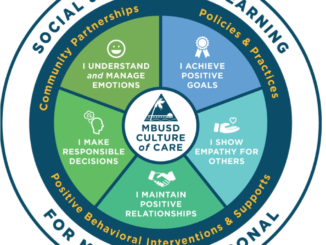by Corey Vikser
Staff Writer
On October 23, People Achieving Complete Equality held their annual Red Ribbon Assembly dedicated to preventing drug abuse and protecting the safety of student body. However, the measures taken to achieve these goals were minuscule and provided no true solution, even after attempting an entirely new presentation this year.
Opposed to speeches in the past which emphasized the detrimental effects of drugs through horror stories, PACE enlisted professional speaker Tyler Durman. Durman started off with stories of tolerance and lovesick eighth graders as the audience anticipated a sentimental speech about the dangers of drugs. This never came however, as he continued on with comedic sketches and philosophy on life for the duration of the assembly. While the student audience seemed engaged in the presentation more than any other of its predecessors, it was achieved at the expense of the message trying to be put across.
Substance abuse was only briefly mentioned as a ‘waste of time’ and tool of social assimilation. While applicable to many other aspects of high school, the speech failed to fulfill the morals represented by Red Ribbon Week. This year only continues the irresponsible trend set by PACE by continuing to preach drug abstinence without any true advice or education to students.
Statistics from The U.S. Department of Health and Human Services have reported that at least 41% of American citizens have admitted to trying marijuana. In fact, drugabuse.gov reports an increase in the past decade of illicit drug use in America. Substances are an unavoidable aspect of society, but Red Ribbon Week assemblies often try to brush these facts under the rug with hyperboles, horror stories and ominous slogans warning of student’s futures.
By treating all forms of drug use with extreme examples, the assembly is not applicable to all students. If they are taught that substances like marijuana are addictive and later learn otherwise, they may form a distrust in following drug education and believe the same fear-mongering was applied to harmful drugs such as cocaine, opiates and benzodiazepines. This, in hand, creates a ‘forbidden fruit’ effect to students that may tempt them to try the drugs the program exploitatively represented.
In a study done at University of Albany, it was shown that students who volunteered for drug education programs were shown to use less substances in their later lives opposed to those who were forced to. To properly combat drug abuse, Mira Costa should implement a school-wide program that provides proper education and safety briefings on illicit drugs while maintaining an unbiased presentation of information. A drug education program could create an open, honest atmosphere dedicated to harm reduction for students. By implementing this, students can properly distinguish the dangers and risks associated with each individual drug with information distanced from past propaganda campaigns.
The PACE program has failed to truly provide a proper drug prevention program, instead relying on propaganda slogans, merchandise such as bracelets, and a hardly related comedic speech. To properly combat drug abuse, Costa must take an unbiased route and provide students with an educational harm reduction program.




Leave a Reply